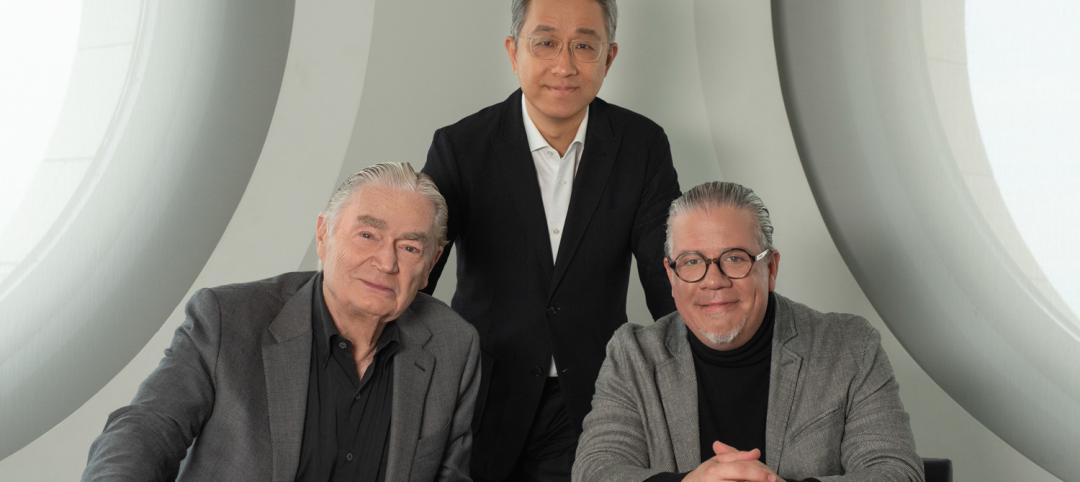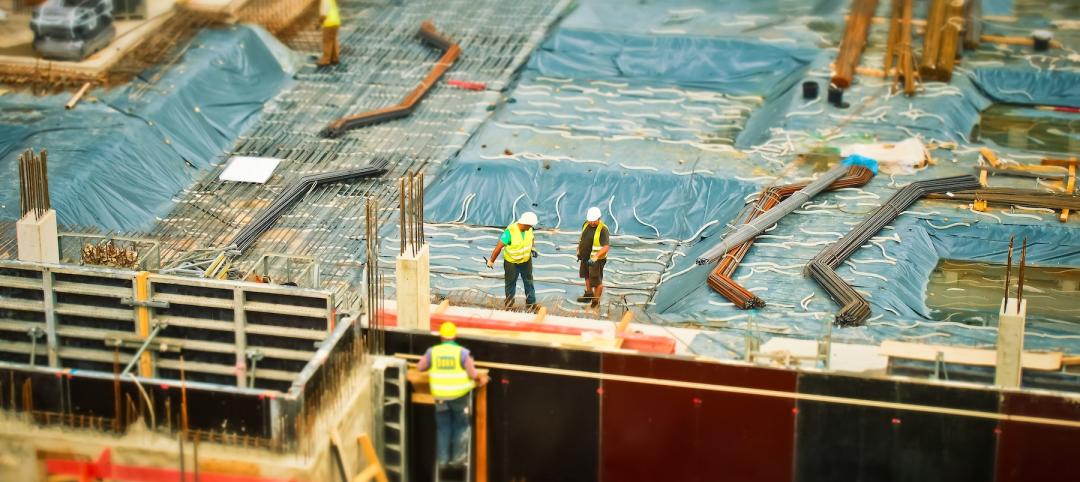As they hone in on LEED certification, Building Teams need to look at the energy efficiency of every product and system that goes into a project, including vertical transport systems—elevators and escalators. Building owners and facility managers who are under pressure to reduce energy consumption and increase building efficiency are finding that one of the most economical solutions is to modernize and upgrade elevators.
Many of the same technological advancements that are improving energy efficiency in elevators are being applied to escalators. The end result is vertical transport systems that reduce a building’s operating costs and improve sustainability.
Several recent VTS innovations have been fine-tuned to better serve the nonresidential market.
TWEAKING MACHINE-ROOMLESS ELEVATORS
Over the past decade, machine-roomless (MRL) elevators have gained acceptance for a number of reasons: 1) they don’t require a separate machine room or electrical closet because the machinery is self-contained within the hoistway; 2) their motors are smaller and generate less heat; and 3) they don’t use petrochemical-based lubricants.
Sam Huleis, LEED AP, a senior project manager with C.W. Driver, a design-build firm in Pasadena, Calif., says that in addition to simplifying design and construction, MRLs use 40-50% less energy than conventional elevators, reducing operating costs for the building owner. C.W. Driver utilized Otis Elevator Co.’s Gen2 MRL traction elevators at the recently completed Valley Performing Arts Center at the California State University, Northridge.
“The Gen2 elevators use an in-hoistway motor and sheave system along with a unique flat-belt cable system,” Huleis says. “These polyurethane-coated steel belts take up less space than conventional braided steel cables and produce a quieter operation and a smoother ride. In addition, there’s no need to lubricate the belts or machinery.”
Another MRL innovation is the regenerative drive system, which feeds energy usually lost during braking back into the building’s electrical grid, where it can be used for other purposes such as stairwell lighting. Regen drives are standard on the Gen2, says Rick Pulling, director of worldwide new equipment for Otis Elevator.
Gen2 elevators with regen drives were used in the Proximity Hotel in Greensboro, N.C., the only LEED Platinum hotel in the U.S. “The energy aspect was a huge factor” in the choice of MRL and the Gen2 regenerative drive system, says Jeff Kennedy, general manager for Quaintance-Weaver Services, the GC arm of hotel operator Quaintance-Weaver Restaurants & Hotels. Kennedy says that, while it has been difficult to get an exact measurement on energy savings due exclusively to the use of the regen drive, he has been assured by the mechanical engineer he contracts with that “the elevators are the single largest energy saver in the building.”
Newer MRLs such as Schindler Elevator Corp.’s 3300 and Kone’s EcoSpace are designed specifically for low-rise buildings. Schindler claims the cab of its 3300 model is 5% larger than a traditional MRL or hydraulic elevator. ThyssenKrupp’s synergy line is available in six different designs to fit virtually any building, offering speeds ranging from 150 to 500 feet per minute.
In low-rise buildings, the first cost of an MRL is approximately 10% more than its hydraulic counterpart, says Michael Landis, vice president of Schindler Elevator Corp. But since the contractor doesn’t have to build a machine room or electrical closet with air conditioning, the savings can run to roughly $10,000, he says.
Latest Trends in Elevators and Escalators
- The latest machine-roomless elevators are designed specifically for low-rise buildings.
- More advanced destination dispatch technology saves energy and allows building owners to deliver a higher level of personalized elevator service and security.
- LED lighting in cabs reduces heat loss and increases lifespan.
- Urea formaldehyde-free elevator panels improve indoor air quality.
- Regenerative drives transfer unused energy back into the building’s electrical grid for other uses.
- Remote monitoring ensures seamless adjustments and repairs and minimizes costly elevator down time.
- Variable-speed escalators conserve energy by automatically slowing down during off-peak usage periods.
DESTINATION DISPATCH GETS PERSONAL
Destination dispatch technology is a sophisticated traffic management tool that has undergone recent improvements. Such systems do away with traditional up/down buttons; instead, passengers use keypads or interactive touchscreens to register floor calls. They are then assigned to specific cars, minimizing the number of starts and stops required as well as wait and travel times. Newer systems such as Schindler’s Personal Occupant Requirement Terminal (PORT) utilize card-reading technology through radio frequency waves.
Destination-dispatch can be used to put individual cars in standby mode when they’re not needed, shutting down lighting and ventilation. Building owners can use it to maintain security; for instance, they could restrict access by delivery people. People with special needs are discreetly assigned to elevators that can accommodate them. In hospitals, destination dispatch automatically directs medical personnel to elevators sized for gurneys or crash carts.
Building management firm Golub & Co. installed a destination dispatch system as part of an18-month elevator modernization project at 680 N. Lake Shore Drive in Chicago. Over the course of a single weekend, Schindler ID terminals and controllers were interfaced with existing elevator controllers, offering an immediate improvement in efficiency. The existing elevators were refurbished and components were replaced as necessary.
Taking the elevators out of service would have been a major inconvenience for the building’s medical and office tenants, says Tim Conway, general manager for Golub. Working with VTS consultant Desmond Associates of Carpentersville, Ill., the firm chose Schindler for the project “because they were able to put the destination technology on the front end,” says Conway. End users didn’t notice when a car was out of service because the destination interface was there to direct them to the right elevator.
“We’re trending toward about a 23% reduction in energy usage,” Conway says. “We’ve also done some traffic studies with wait time and destination time, and those have improved closer to 50%. It’s incredible.”
Huleis says that with destination dispatch systems, control panels can be placed anywhere in the building, eliminating in-cab controls. “This feature is mostly useful on high-rise buildings,” he says.
Double-deck elevators have traditionally been used in very tall buildings because they can move large numbers of people with fewer cabs. Typically, the top deck serves the even-numbered floors, the bottom deck the odd-numbered floors.
“Double-deckers can reduce the need for space in the core of a building from 30-45%,” says Otis’s Pulling. While they can be installed as part of a modernization, they require significant project management and front-end planning, which is why they’re more common in new construction “where you design to a specific core requirement,” he says.
A look to the future: Schindler is currently developing a three-deck elevator.
GETTING DESIGN CONSIDERATIONS RIGHT
It may seem obvious, but elevators should always be designed based on the intended use of the building and the volume of traffic anticipated. “Traffic patterns are dependent on each floor’s population and whether the building is open for business 24/7, such as a hotel versus an office building,” says Brad Nemeth, director of sustainability for ThyssenKrupp Elevator Americas.
High-rise buildings may require customized engineering to compensate for elevator speeds approaching 2,000 meters (about 6,500 feet) per minute. “At these speeds,” Nemeth says, “aerodynamic considerations must be factored in along with pressure differentials above and below the elevator cab, which can produce vibration and excessive noise.”
In terms of energy efficiency, architect Brian Sipes, AIA, LEED AP, principal of Zehren & Associates in Avon, Colo., says MRLs perform as advertised, but their higher first cost is justifiable depending on how often the elevator is going to be used. “If it’s less than once a day, there’s no payback,” he says. “If it’s frequently, MRLs are an easy sell if you can prove the return on investment.”
One caveat: If a client wants high-end elevator finishes, MRLs may not be an option. Many of Zehren’s projects are ski and golf resorts where custom millwork on the walls and stone floors are a must, partly for aesthetics and partly to shield against damage from ski boots and golf cleats. “In those cases we have to go with traditional hydraulic elevators because they don’t have the design or weight limitations of an MRL,” Sipes says. BD+C
Related Stories
| Aug 17, 2022
New York to deploy 30,000 window-sized electric heat pumps in city-owned apartments
New York officials recently announced the state and the city will invest $70 million to roll out 30,000 window-sized electric heat pumps in city-owned apartments.
| Aug 17, 2022
IBM’s former office buildings in Boca Raton turn into a modern tech campus
Built in 1968, the Boca Raton Innovation Campus (BRiC), at 1.7 million square feet, is the largest office campus in Florida.
| Aug 16, 2022
DOE funds 18 projects developing tech to enable buildings to store carbon
The Department of Energy announced $39 million in awards for 18 projects that are developing technologies to transform buildings into net carbon storage structures.
| Aug 16, 2022
Multifamily holds strong – for now
All leading indicators show that the multifamily sector is shrugging off rising interest rates, inflationary pressures and other economic challenges, and will continue to be a torrid market for design and construction firms for at least the rest of 2022.
| Aug 16, 2022
Cedars-Sinai Urgent Care Clinic’s high design for urgent care
The new Cedars-Sinai Los Feliz Urgent Care Clinic in Los Angeles plays against type, offering a stylized design to what are typically mundane, utilitarian buildings.
| Aug 15, 2022
IF you build it, will they come? The problem of staff respite in healthcare facilities
Architects and designers have long argued for the value of respite spaces in healthcare facilities.
| Aug 15, 2022
Boston high-rise will be largest Passive House office building in the world
Winthrop Center, a new 691-foot tall, mixed-use tower in Boston was recently honored with the Passive House Trailblazer award.
Architects | Aug 12, 2022
Goettsch Partners names James Zheng, CEO, and Paul de Santis, Co-design Director
Global architecture firm Goettsch Partners (GP) announces that James Zheng, AIA, LEED AP, has been named CEO, and Paul De Santis, Assoc. AIA, LEED AP, joins James Goettsch, FAIA, as co-design directors for the practice. As the primary partners in the firm, the three have worked closely together for more than 17 years. Goettsch will also continue to serve as chairman while Zheng now assumes the full CEO title as well as president.
| Aug 12, 2022
Monthly Construction Input Prices Decreased 2% in July, Up 17% From a Year Ago, Says ABC
Construction input prices decreased 1.8% in July compared to the previous month, according to an Associated Builders and Contractors analysis of U.S. Bureau of Labor Statistics’ Producer Price Index data released today.
Hotel Facilities | Aug 12, 2022
Denver builds the nation’s first carbon-positive hotel
Touted as the nation’s first carbon-positive hotel, Populus recently broke ground in downtown Denver.

















